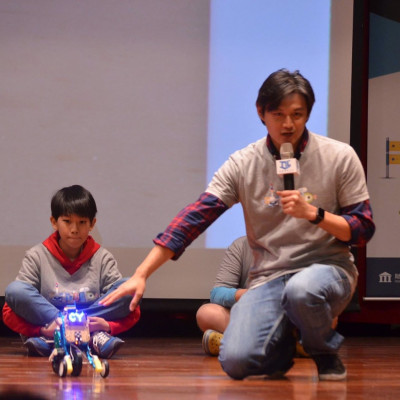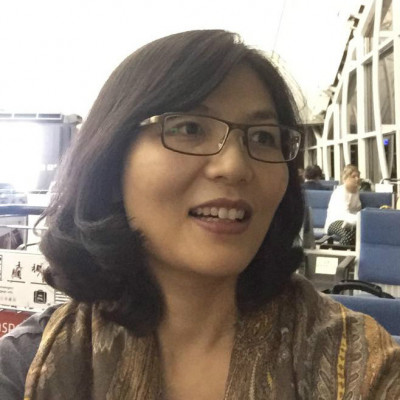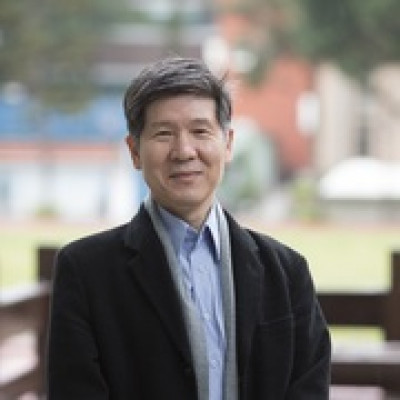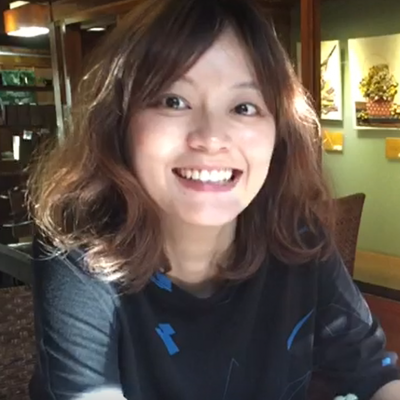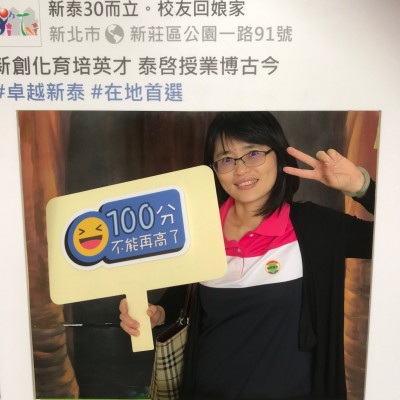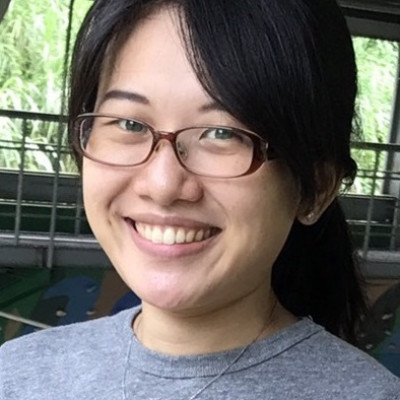Sessions / Location Name: Room B (Google Meet)
Virtual Location
Virtual: You cannot enter virtually via this page. Click on the titles of individual presentations or go to the Live Page
A preliminary study on developing bilingual classroom assessment #2524
The study draws upon a conceptual framework of the three assessment approaches (assessment of/for/as learning) and a five-phase cycle of bilingual classroom assessment that subsumes (1) planning assessment, (2) collecting and organizing assessment information, (3) interpreting assessment information and providing feedback, (4) evaluating and reporting assessment information, and (5) taking action on the assessment results. Within this framework, the purpose of the study is to develop five modules of bilingual classroom assessment across the bilingual curricular on the arts, the health and physical education areas, cross-area project, and the using English as a medium of instruction in the English subject (i.e., the EMI). By the design-based research approach, the study investigated how the bilingual classroom assessment practices were contextualized and developed with foci on the lesson planning, the instruction implementation, and post-lesson reflections from the teachers’ perspectives. Data-collection techniques included via interviews, lesson co-planning notes, lesson observation notes, students’ worksheets and assessments, and the teachers’ post-lesson reflections. Five secondary schools (4 junior high schools, 1 senior high school) and 7 teachers (3 English teachers, and 4 content area teachers) partook in the study. Preliminary findings revealed the five assessment modules that detail why, what, how, and so what of the assessment, alongside a succinct lesson plan of a unit (a range of 3 to 16 class periods). In terms of post-lesson reflections, content-area teachers emphasized the importance of aligning classroom participation and English learning targets with the assessment tasks, so as to facilitate the dual-focused learning of Grades 7 and 8 students in bilingual classrooms. In terms of EMI, English-subject teachers indicated a need to set fewer learning targets as well as to slower the instructional pacing, so as to guide the self-directed English learning of Grade 7 students. The study delineates the implications of bilingual classroom assessment.
How can we add more value to bilingual PE lessons? Variability of practice is critical in quality physical activity for children #2558
Since the Bilingual living environment has become a vital national policy, county and city government and research centers have conducted research and develop teaching materials to achieve the main goal. In recent years, more subjects have been putting effort into learning through foreign languages. Physical Education (PE) is often the subject chosen for applying multilingual initiatives based on content and language integrated learning (CLIL). CLIL provides students with enhanced opportunities to acquire skills and knowledge in additional languages, while learning a variety of subjects. Student can learn a second language through daily life and natural patterns, since Physical Education is taught in English. How can we add more value to bilingual PE lessons, not just motor skill development and language, but also achieve competency? Variability of practice is critical in quality physical activity for children, and it increases the formative value of physical activities. The textbook of Taipei municipal for PE covers new curriculum, provides a work plan, and explains how to plan PE-in-CLIL units and lessons. In the text book, we consider the beneficial effect of PA level, motor development, and variability of practice to develop competencies with international perspective and cultivate a new generation of citizens.
Teaching Young Learners Mathematics: A CLIL Approach #2520
As literature indicates, it can be argued that mathematics is a language because it has its own set of rules, and with a finite number of symbols an infinite number of utterances can be created. Students need to master this language in order to read, understand, write down, and discuss ideas. In a CLIL lesson, both the learning of mathematics concept and the simultaneous learning of a second or foreign language is emphasized. This present paper will examine the following two aspects: How to scaffold young learners to process the mathematics concept through a second language? How to guide young learners to learn the mathematics language?
Elementary School CLIL Teacher’s Target Language Competence and Pedagogical Knowledge #2521
The promotion and practice of bilingual education in Taiwan are sometimes met with doubts and even resistance from classroom teachers, and one major reason is the lack of confidence in their target language competence in teaching CLIL lessons. This presentation will argue that a CEFR minded rhetoric about bilingual teachers’ target language competence requirement actually does a disservice in the promotion of bilingual education. I will discuss different aspects of bilingual teachers’ target language competencies, and provide suggestions for teacher preparation institutes and government agencies to better support teacher’s professional development in this respect.
The development of elementary Life Curriculum bilingual teaching materials #2522
Wenzao University of Languages has established a bilingual research center since 2018. One of its tasks is to design bilingual teaching materials for elementary courses, including integrative activities learning area, Life Curriculum, and PE. In this presentation, bilingual teaching materials for Life Curriculum will be discussed. This year, the Wenzao team has completed four Life Curriculum bilingual materials. These teaching materials are to serve as a tool and reference book for teachers, not only English teachers, who want to plan and design bilingual lessons. The content of the books follows the Chinese textbooks. The one presented in this presentation is book 1 (first grade). There are 6 units, and each consists of 5 basic components, namely course introduction, words and phrases, sentence patterns, teaching procedure, and content explanation. During the developing process, we consulted with native English speakers for language usage and wording. We also tested out the content in elementary classes. In-service teachers also gave us feedback regarding the organization, content and language use. Modifications were made accordingly. We hope that this set of books can be a handy and useful tool for elementary bilingual teachers.
Vocabulary Demand for Science Curriculum #2634
This study is a lexical analysis of spoken discourse supporting vocabulary development for English as a foreign language students who are learning science in English. The study analyzed bilingual science lesson from grade 4-6 grade, a lesson from each grade level. The AntWordProfiler was used to analyze the transcripts of the lessons. AntWordProfiler is a “freeware tool for profiling the vocabulary level and complexity of text” (Anthony, 2014, n,p.) that lists the words that occur in a text according to their frequency. Naiton’s (2006) BNC word family list of fourteen 1,000 word lists were used with AntWordProfiler software to show the percentage lexical coverage of the 14 groups of 1,000 words at which the words in the science lessons occurred. The study shows that L2 learners need to know 4000-5000 word families to understand 95% of the words in science lessons.
Pre-Service Teachers’ Perceptions Toward Global Learning Experience: Implications for Teacher Intercultural Competency Development #2508
With the shifting makeup of diverse student populations and their needs in today’s changing landscapes of education, teacher education reforms in the U.S. have placed a premium on the development of knowledge and skills that characterizes culturally and linguistically competent teaching necessary for pre-service teachers to address the needs of a changing society. Drawing on existing frameworks of orientations and pedagogical knowledge and skills for enhancing teachers’ intercultural competency, this study examined pre-service TESOL and Bilingual Education teachers' (N = 17) attitudes and perception of their global professional experience in a fieldwork assignment where New York-based teacher educators conducted a ‘virtual school visit’ to a school in India where they were guided by their Indian global partners to survey the host schools’ learning environments and teaching practices.
To explore and gauge the knowledge and skills candidates gained through this intercultural experience in teacher education courses, the author analyzed candidates’ forum discussions and reflections as they discussed the findings of their curricular investigations in their collaborations with their cross-cultural partners. Selected participants were interviewed to discuss their learning via digital platforms, such as emails, discussion boards and video-conferences.
Results indicate that while most participants are aware of pedagogical knowledge related to second language and bilingual acquisition and aware of the need to work with students from diverse cultures, there were significant levels of knowledge gaps when they were taken out of their cultural and linguistic comfort zones. The author recommends that teacher education programs incorporate a critical approach to global learning experience in teacher education programs to address these knowledge gaps in theory and practice throughout meaningful experiential learning in a comprehensive, long-term manner, so that candidates can develop the knowledge and competencies necessary to engage differences and strengthen their commitments to moving toward more equitable learning outcomes for all students.
Critical Review of Bilingual Education Lesson Plans #2603
This session is for the critical review of bilingual education lesson plans. Judges from seven subject areas (science, math, physical education, art, life curriculum, and integrative activities) will comment on the lesson plan contest submissions. They will also suggest ways on how to create an exemplary bilingual lesson plan. After this session, the winners of the contest will share their lesson plan design.
What do plants need? #2544
To raise the awareness of the ecological environment, we conduct this a series of courses to start concerning on the surroundings in campus. To get students closer to the nature and build their responsibility, we planned to have students plant and take care of their own okras. This lesson was practiced just at the same time they finish seeding. Students are expected to apply the knowledge they learn from the course and take good care of their plants as well as developing patience, responsibility, and problem-solving skills.
The Magic Wind #2555
Wind, which is always ignored, exists everywhere. From the picture book “Where Is the Wind”, students can discover that wind indeed exists everywhere. By discussing the application of the wind, students can learn the famous Dutch windmills and their songs. Through the rhythmic activity of silk scarf, singing of the song “The Wind Blows Over” and the performance of maracas, students can explore and experience the variety of appearances of wind. Winds of different intensities lead out the concept of dynamics in music, which then is transformed into the strong and weak notations (f/p) on the score. Taking the theme of life as the context, construct a process of experiencing the contrast between strengths and weaknesses and recognizing musical terms, so as to enhance students' hearing acuity and perception. At the end of this unit, students are divided into groups to perform the song with the strong and weak marks they’ve redesigned.
River Guru 護河小達人 #2546
Most big cities around the world have rivers winding through. Rivers enrich the livelihood of human beings. Our local Dahan river contributed to the richness and prosperity in Xinzhuang over three hundred years ago. Nowadays, its riversides have become one of the citizens’ best choices for leisure. However, from time to time, we can still see the news report of wastewater being discharged into the river. The river belongs to all citizens. We need to teach our children the value of Dahan river and to cherish the comfort it offers to us. We try to bring the awareness of what the result could be if the pollution problems continue or worsen to our children. Our goal is to help them cultivate the ideas of protecting our river and hometown. Therefore, we design the two-session lesson plan with the topic of river conservation to arouse the affections of our children and to achieve the goal of maintaining a sustainable environment.
Fitness Monopoly #2552
Through playing Fitness Monopoly, students are able to learn a variety of fitness actions to strengthen their body. Moreover, students can design their own fitness plans in their daily lives after the class.
Cat’s Wonder World 畫我貓咪 #2549
By drawing cats, students can observe cats' picture and find out the same or similar colors. Students can learn how to mix colors with oil pastel and how to use different skills to paint a cat's body. Also, students can design a proper background related to their daily life behind the cat by observing its positions.
Quilling art #2554
In this project, I cover four domains, namely, art practice and performance, appreciation, language and semiotics, which could be adapted to the 4Cs framework of CLIL. Besides, I also relate the learning objectives to 6 Levels of Bloom’s Taxonomy, marked the ability of level in the lesson plan below. In the beginning of the class, students will be inspired by the brief quilling art history, and become aware of its similarity of Art Nouveau. Later, they will start with rolling a strip of paper into a coil and pinching the coil into shapes that can be glued together. By repeating the basic quilling skills and making coils of different shapes, students are able to strengthen the paper quilling ability and eventually create a quilled design. I expect students to make good use of the elements of beauty to create their unique quilling art pieces. When art works are completed, through the class exhibition and the demonstration of the masterpieces of two modern quilling artists, student will be able to appreciate the art created not only by them, but by others. They will also recognize more applied art forms transferred from quilling art in our daily life, such as jewelry and furniture designs. This way, students will know more possibilities of quilling art.

